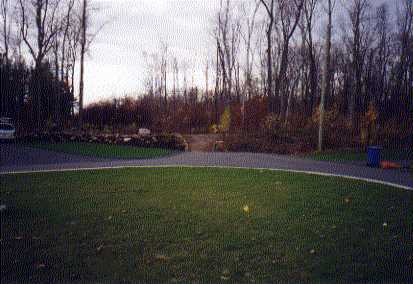
A piece of land was donated to McGill University that is approximately 51 hectares (excluding lot 777---waterfront property to the northeast of the main reserve), and named the Molson Nature Reserve in recognition of its donor, Jane Sullivan, a resident of Ile Perrot North. It is partially situated at the western edge in Terrasse-Vaudreuil with the remainder being situated on the northern tip of Ville Ile Perrot, bordered to the South by the railway tracks, and to the north and east by Boulevard Perrot North. The reserve is located in an ideal area for McGill University, being only approximately a 10-minute drive from Macdonald College.
The Molson Nature Reserve mainly consists of the Great Lakes St. Lawrence forest in southern Québec, located at 45 23’ N latitude by 73 59’ W longitude. In addition to the forest, the reserve contains woodland marshes, swamps, and extensive wetland regions that are key habitats for the wildlife that governs that area.
For a map follow this link: Saint Laurent Vision 2000 Action Plan, Biodiversity Component, Site of Ile Perrot
There are several reasons why this land is of great importance. During the past few decades, the region of Ile Perrot has undergone a tremendous amount of housing development. In doing so, most of the natural regions that previously existed are few and far-gone. This has had severe implications on both the flora and the wildlife species of the region as they are slowly losing their habitats and space that are needed in order to survive and deliver invaluable ecosystem functions. The Molson Nature Reserve is situated in an area that is considered to contain a unique combination of habitats and biodiversity. It is considered to be number one in herpetofauna diversity (which includes the amphibians and reptiles) as well being considered as second in plant biodiversity in the St. Lawrence River Watershed in the Eastern region of Canada. If this area were to become another housing development plot, much of the biodiversity would be lost including several rare or even endangered species.
Another reason why this area of land
should have conservation techniques applied is because this region is a
corridor for many species of birds that migrate throughout the year. There
are many small islands in the St. Lawrence River that are currently owned
by the Governments of Québec and Canada, of which it has been noted
that several species use the habitats found in the Molson Nature Reserve
during their migrations. Losing such a unique area would disrupt the migration
patterns of these birds, perhaps sending them to another region of the
world. This might result in a gradual loss of avian biodiversity for Canada,
and more particularly for the province of Québec.
![]()
Two different individual research projects have been developed for the Molson Nature Reserve. These two projects were suggested by our client, Dr. James Fyles, the Director of the Molson Nature Reserve and a professor in the Faculty of Natural Resource Science at Macdonald College of McGill University. He wished that an initial start be made in determining what is out there for the reserve as well as its purpose and what means should be used to ensure its continuance.
The first individual research project involves a mandate and management proposal to act as a guideline for various activities concerning the reserve. This may include any type of activity, from data gathering and research to garbage clean up and trail use. This is mainly an organizational tool and not a source for information.
The second individual group research project involves a proposal on data gathering and ecological monitoring which serves to ensure the management plan is meeting the mandate of the Molson Nature Reserve. This entails of looking at topics from meteorological information to previously done research on the reserve. It is mainly to act as a research tool, aiding in conducting studies on the reserve.
In order for the Molson Nature Reserve to be successfully preserved in perpetuity as the mandate demands, these two elements, organization and research, are essential as both act as a check on the other to ensure the proper care is taken when dealing with the reserve.